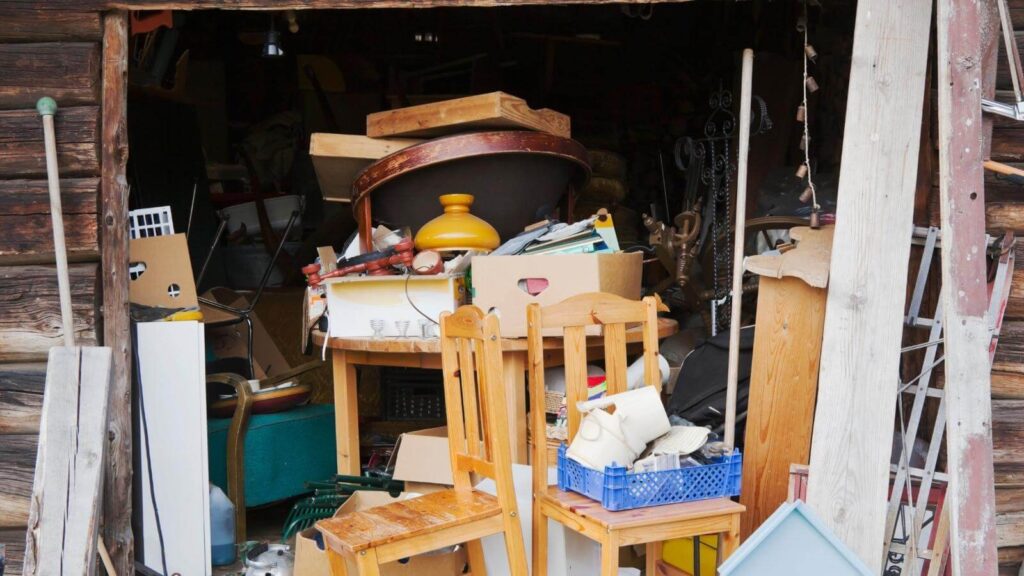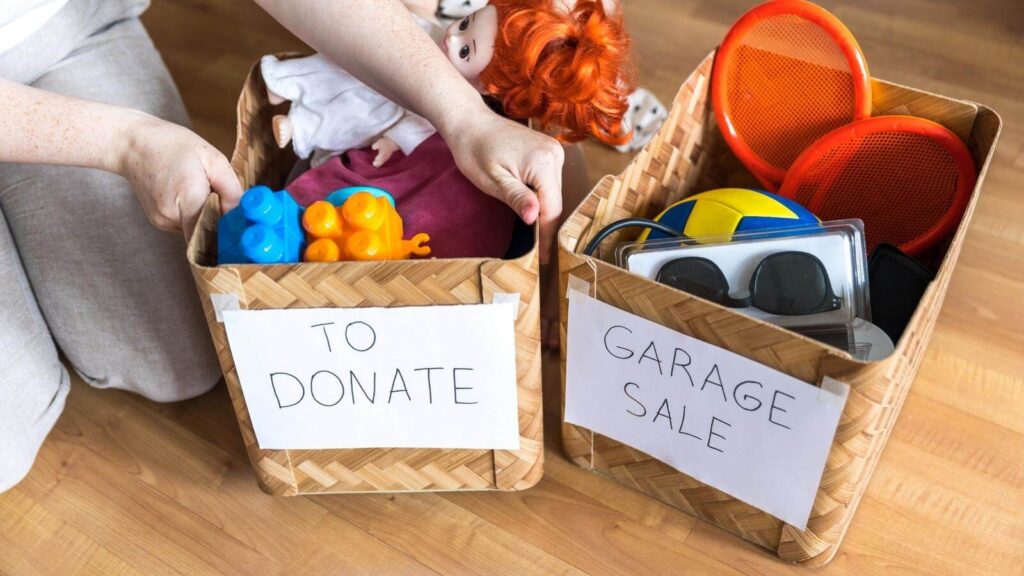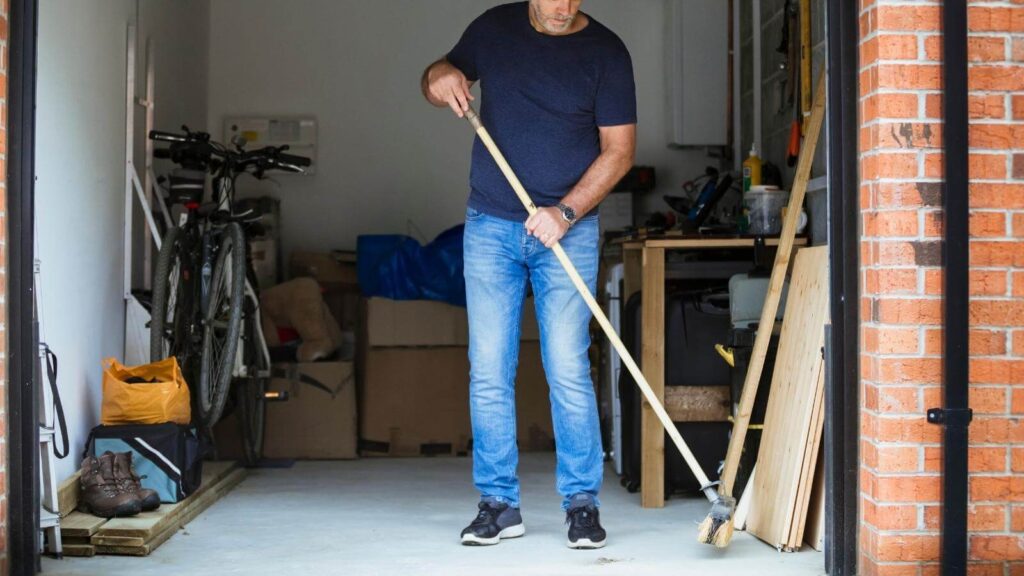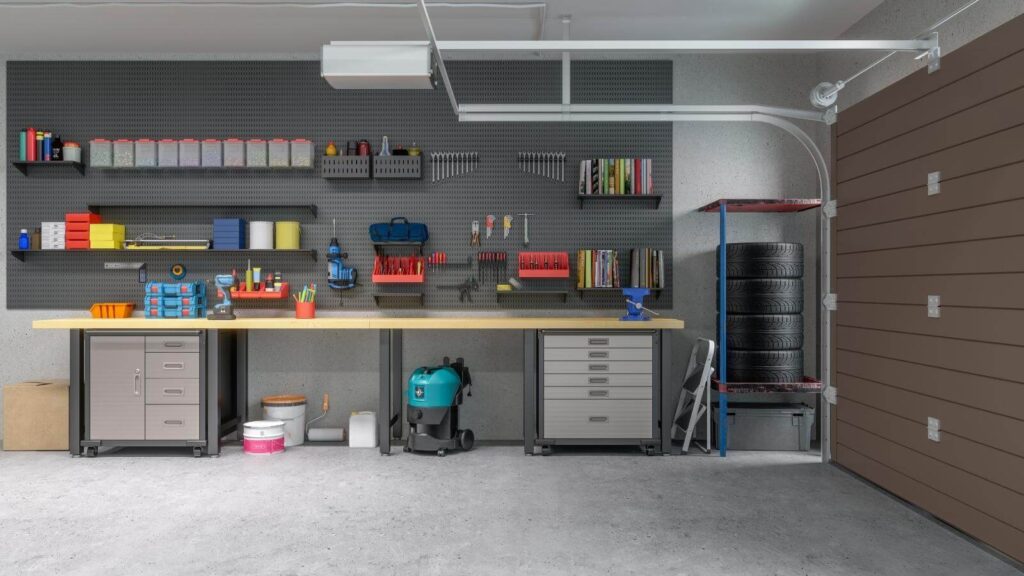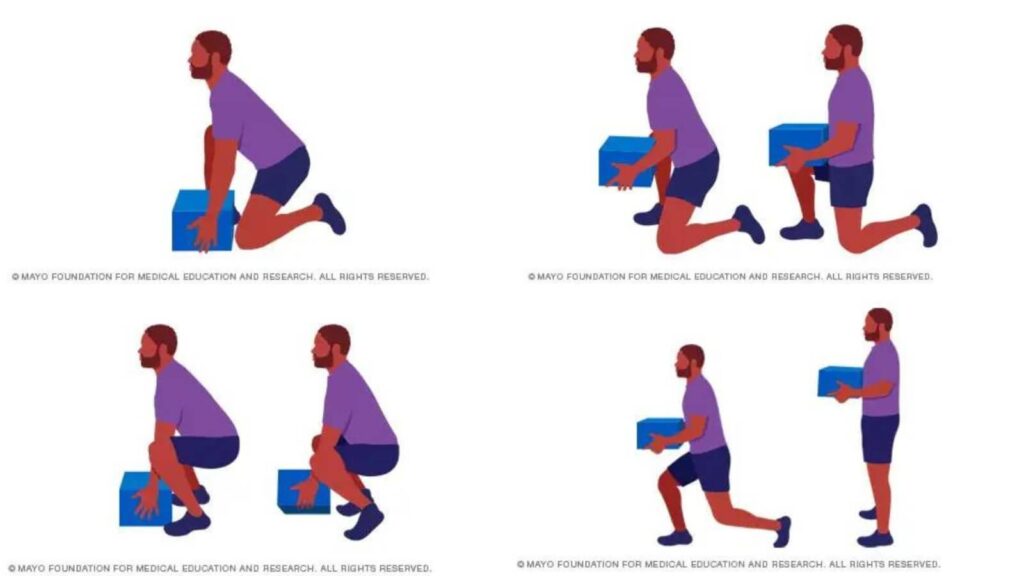Depending on how you use your garage, it might be the most cluttered space in your home. It’s a place where you park your car, store tools, and pile up items you’re not sure what to do with. Over time, this can lead to chaos and make it challenging to find what you need. But fear not! In this comprehensive guide, we’ll take you through the steps to transform your garage into a well-organized, clean, and efficient space.
How To Start Organizing and Cleaning Your Garage
Step 1: Prepare for the Transformation
Before you dive into organizing your garage, it’s essential to prepare adequately. Garage organization can be a time-consuming project so it is advisable to dedicate a weekend or several days to tackle the task. Of course, if you don’t have much to clean, this step might take less time.
You’ll need cleaning supplies, trash bags, storage solutions (shelves, bins, hooks), and labeling materials. If you are planning to convert the garage into a different type of space, this would be the time to decide to leave space or add materials that are needed to get this task done. For example, if you want to convert a section of your garage into a gym, you could take the time to block off space and add gym equipment.
Finally, once everything has been removed or planned, inspect your garage for any repairs or changes that need to be made. This can include repainting walls or sealing gaps.
Step 2: Declutter and Sort
The first and often the most challenging step is decluttering your garage. Before you begin decluttering, you should find a designated area for items you are keeping and getting rid of. Another good tip is to label as you sort.
Start by removing everything from your garage. This allows you to see the full extent of the clutter. When decluttering, keep an eye out for any forgotten valuables hidden in boxes or containers. Mirrors, photo frames, glasses, dishes, and antiques are examples of such items.
An additional tip is to create three piles – Keep, Donate/Sell, and Dispose. Be ruthless in deciding what you truly need and what can go. When was the last time you used these items? Are you actually going to use it in the future? Is the item of sentimental value? Can someone else benefit from it? Asking yourself these questions can help you determine what needs to go.
Items in good condition that you no longer need can be donated or sold to declutter and even make some extra cash.
Step 3: Clean Thoroughly
Once you’ve decluttered, it’s the best time to clean! If you don’t clean your garage often, you should consider wearing a mask to protect yourself from inhaling dust or other particles that might cause irritation or respiratory problems.
You can begin by sweeping the floors and dusting all surfaces. This will help remove cobwebs and loose dirt. After you’ve swept, you should consider either power washing or lightly washing the floor. If your garage floor is stained or dirty, consider power washing it for a deep clean. If your garage floor has a specific coating/sealing, make sure you are using cleansers that are appropriate and non-damaging.
After that, wipe down and organize your tools, ensuring they are in good working condition. Make sure everything is dry before deciding to move your items back.
Step 4: Plan Your Storage Solutions
Now, let’s focus on creating an efficient storage system. Hopefully, you regrouped and labeled your items from the previous step because that will help your storage plans fall into place. If you didn’t label anything, now is the time to Clearly label storage bins and containers to identify their contents (this makes finding items a breeze).
If you grouped items (keep, donate/sell, toss), this is the time to take action on those items. For your keep pile, consider using color-coded labels or containers for different categories of items. For example, red for tools, blue for sports equipment, and green for gardening supplies. For your donate/sell pile, you could host a rummage sale, post stuff online, or donate to your local shelters/Goodwill or Salvation Army. If you plan to have a rummage sale, make sure to look up your municipal laws on how to properly conduct one. Lastly, for your toss items, throw away your smaller items in your respective dumpster. If you have larger items or electronic items you are looking to get rid of, make sure to look at your waste management laws to avoid fines or issues.
When it comes to storing your items, you have several options you can consider:
- Wall-mounted shelves are excellent for storing items like paint cans, sports equipment, and gardening supplies.
- Pegboards are ideal for hanging tools, gardening equipment, and small items. They keep everything easily accessible.
- Garage cabinets are perfect for storing chemicals, automotive supplies, and other hazardous materials out of reach of children and pets.
Step 5: Arrange Your Garage Thoughtfully (& Carefully)
Efficient organization requires thoughtful placement, as well as, cautious movement. As mentioned before, use a mask to avoid inhaling a lot of dust or particles that could cause irritation. Additionally, before moving boxes and containers, be mindful of what’s within them, and remember to practice proper lifting techniques when lifting large objects. Use your legs to lift, squat instead of kneeling, and don’t bend over to lift something up.
Create designated zones for different categories of items. For example, have a zone for automotive supplies, another for gardening, and a third for sports equipment. It is important to place frequently used items at eye level or within easy reach, while seasonal or infrequently used items can be higher or farther away.
Step 6: Maintain Regularly
Maintenance is key to keeping your garage organized! Establish a regular maintenance schedule to keep clutter at bay. It could be weekly, monthly, or seasonal, depending on your needs. Periodically reassess your storage solutions to ensure they’re still working for you and make adjustments as necessary.
Knowing what should and should not be stored in a garage is crucial for both safety and the preservation of your belongings. Garages are subject to temperature fluctuations, humidity, and potential exposure to pests, so it’s essential to be selective about what you store there.
Items You Should NOT Store in the Garage:
Knowing what to store in your garage is a matter of safety. Here are a list of things you should never store in the garage:
- Perishable Food Items: Garages are not climate-controlled spaces (unless yours is or has amazing insulation) and can experience extreme temperature fluctuations. Storing perishable foods in a garage can lead to spoilage, attract pests, and pose health risks. This also includes pet food.
- Electronics: Electronics, such as televisions, computers, and stereo systems, are sensitive to temperature and humidity. Extreme heat or cold can damage them over time. Moisture can also cause electronic components to corrode.
- Sensitive Documents: Important documents, such as birth certificates, passports, and financial records, should not be stored in the garage. Moisture, pests, and temperature fluctuations can damage or destroy these items. Having weatherproof storage containers can improve this situation, but sensitive documents in general should be stored inside the house in a safe or locked space.
- Artwork and Photos: Artwork and photographs are susceptible to damage from temperature and humidity changes. Colors can fade, paper can warp, and photographs can stick together in the wrong conditions.
- Leather and Fabric Items: Leather furniture, clothing, and fabric items can deteriorate when exposed to moisture and extreme temperatures and shouldn’t be stored in a garage unless in seal-proof containers. Mold and mildew can develop on these materials and cause further damage and health risks.
- Propane Tanks: Storing propane tanks in an enclosed garage is dangerous. Propane is highly flammable, and leaks can lead to explosions or fires. Always store propane tanks outside in a well-ventilated area.
- Paint and Chemicals: While it’s common to store paint and household chemicals in the garage, extreme temperatures can affect their quality and safety. Some chemicals may become unstable or flammable when exposed to heat or other weather conditions.
Items You Can Store in the Garage:
On the other hand, there are definitely items you should be storing in your garage that are okay to be exposed to garage conditions. Here is a list of items you can store in your garage:
- Tools: Garages are excellent places to store tools, provided they are protected from moisture and rust. Use pegboards, tool chests, or wall-mounted racks to keep them organized.
- Sporting Equipment: Golf clubs, camping gear, and other sporting equipment can be stored in the garage. Use hooks and racks to keep them off the floor.
- Gardening Supplies: Gardening tools, pots, soil, and other supplies can be stored in the garage. Ensure they are kept dry and well-organized.
- Seasonal Decorations: Holiday decorations, such as Christmas lights, Halloween props, and other seasonal items, are suitable for garage storage when kept in labeled bins.
- Automotive Supplies: Motor oil, windshield washer fluid, and other automotive supplies are typically stored in the garage. Just be sure to check labels for any specific storage instructions.
- Outdoor Equipment: Lawnmowers, leaf blowers, and other outdoor equipment are commonly stored in the garage. Keep them clean and well-maintained to prolong their lifespan.
- Overflow Storage: Garages can serve as overflow storage for non-sensitive items like furniture, old appliances, and boxes of non-essential items. Use shelves or pallets to keep these items off the floor and protected from pests. You can also cover these items with protective shields or tarps.
- Bicycles and Recreational Gear: Bicycles, kayaks, paddleboards, and other recreational gear can be stored in the garage. Wall-mounted racks or ceiling storage systems are excellent options.
Remember that the suitability of garage storage depends on your specific climate and conditions. Always evaluate the specific needs and vulnerabilities of the items you plan to store and take steps to protect them accordingly. Consider investing in climate control or insulation if you have valuable or sensitive items that need more protection than a typical garage provides.
Just keep in mind that a clean and well-organized garage requires upkeep. Above all, maintain a continuous maintenance plan to guarantee that your newly cleaned and organized garage remains so!

